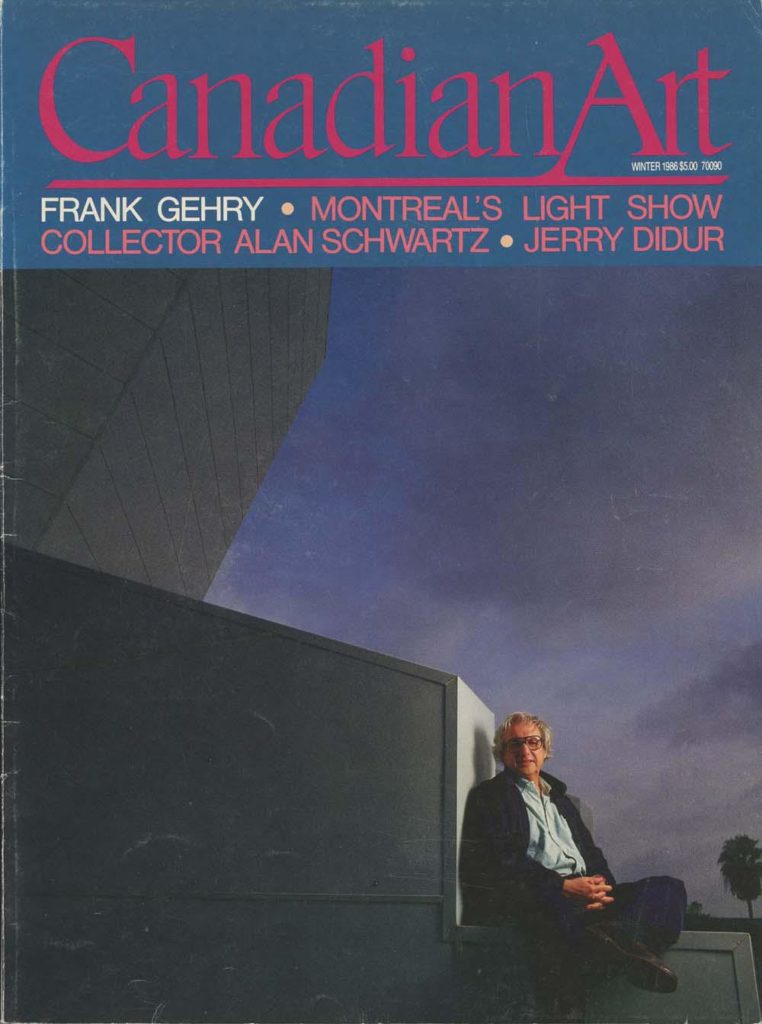September 20, 1986. A crowd is milling around a curvaceous 6.7-metre-high glass-scaled fish in the concourse of the Walker Art Center in Minneapolis. They’ve been arriving all day in waves, from Milan, California, Chicago, New York and Toronto, to celebrate the opening of The Architecture of Frank Gehry, an exhibition honouring the Toronto-born, Los Angeles–based architect who has reserved the right to comment on the world in a vocabulary that runs to chain-link, plywood, cardboard and, increasingly, fish. Gehry’s work is so personal and inclusive, it is often put down as irrelevant to architecture or, insult of insults, populist. The fact that he’s never made any secret of being influenced by art and artists has added to the confusion: is he an artist who stumbled into architecture, or an architect halfway to becoming an artist?
By organizing a travelling exhibition of Gehry’s honour—it will be coming to the new Art Gallery at Harbourfront in August 1987—the Walker Art Center’s adventurous design curator asserts that he is indeed an architect—a “contemporary master builder,” in fact, whose work “bridges the gap between the art of building and the arts of painting and sculpture.” The pronouncement is, of course, controversial. The term master builder is not taken lightly in architectural circles, either by architects vying for the coveted title or critics competing for the right to crown the next king. The mantle of Frank Lloyd Wright, the greatest architect in American history, is up for grabs—and everyone who’s anyone wants a say in who’s going to inherit it.
So begins our Winter 1986 cover story. To keep reading, view a PDF of the entire article.









